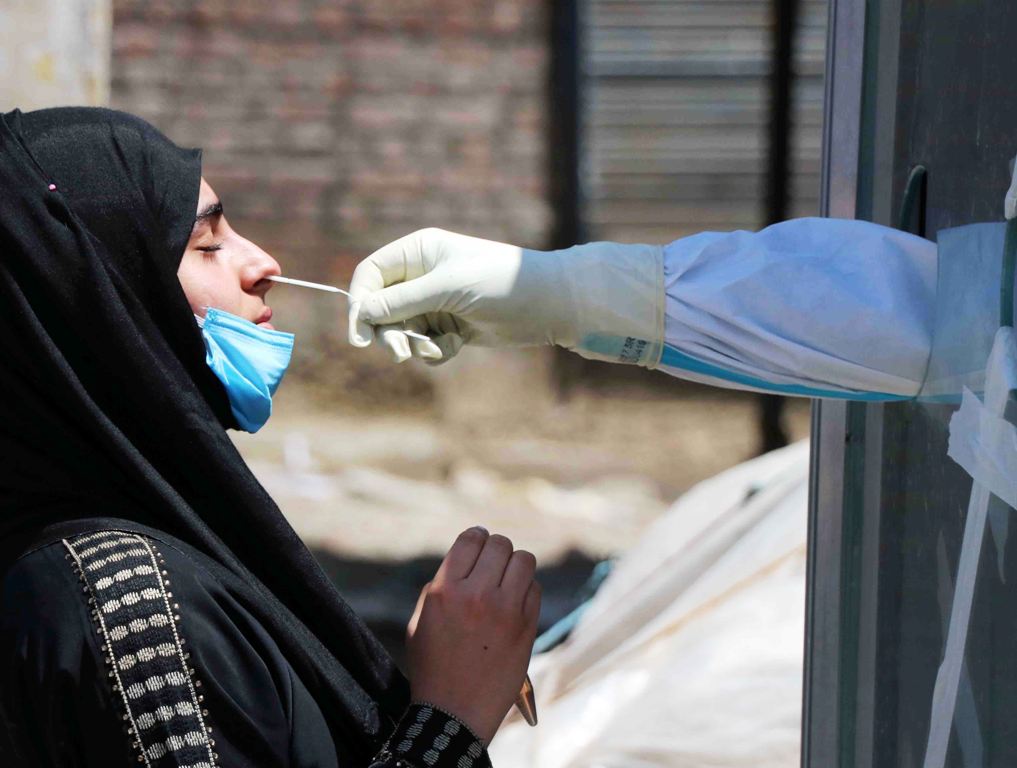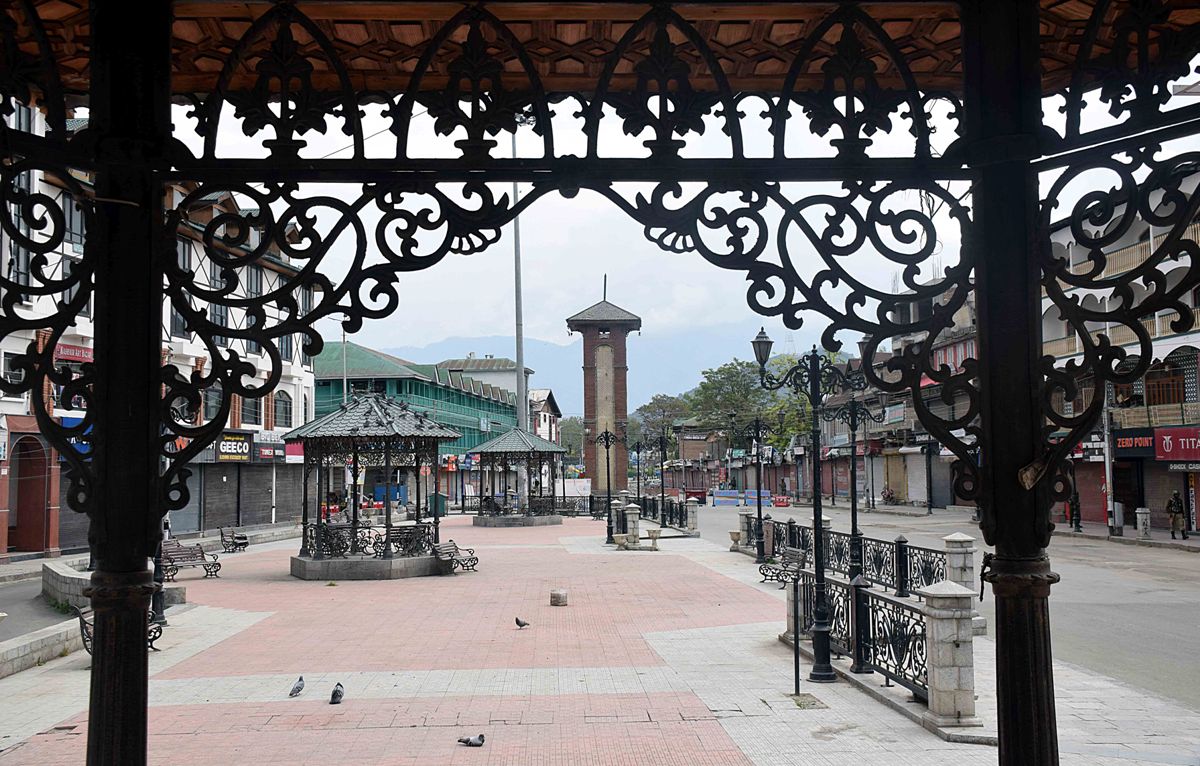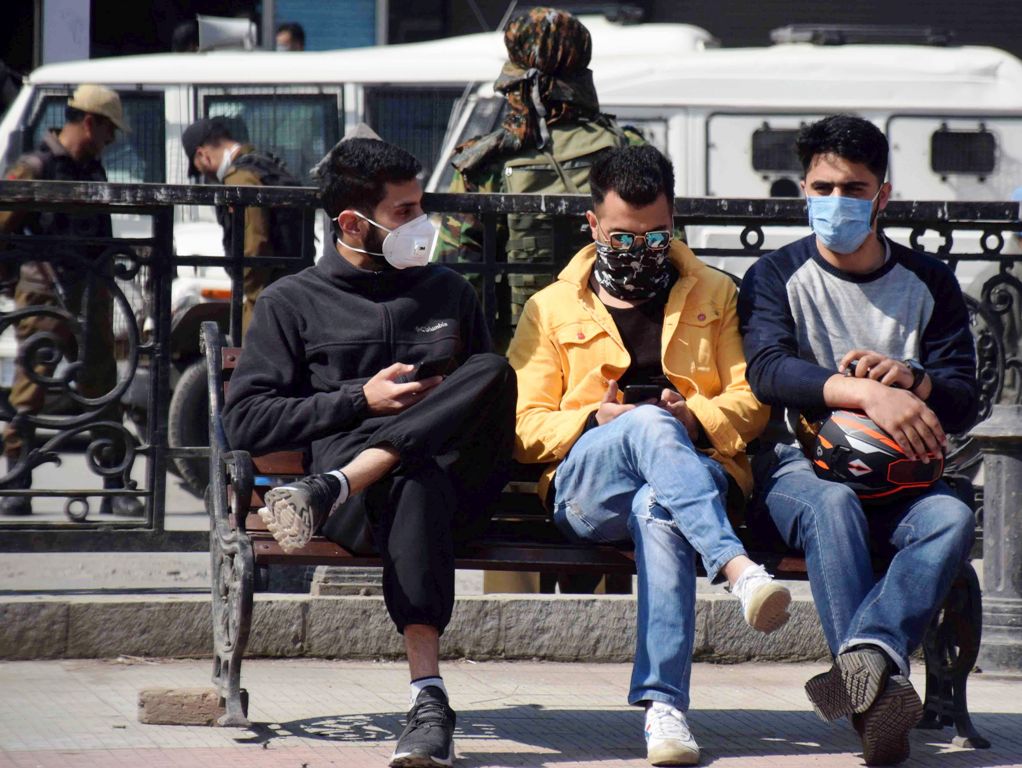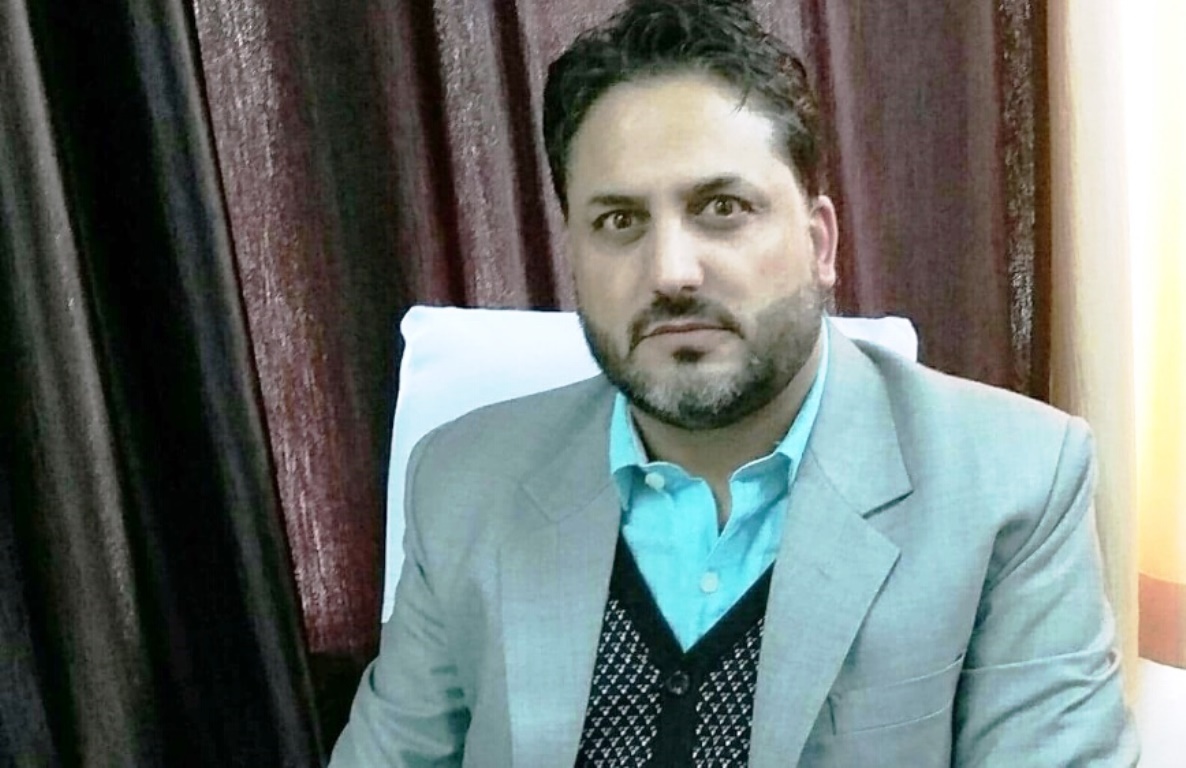by Dr Suhail Naik
By stating “we have to live with the virus” does not mean the World Health Organization (WHO) has opened any diplomatic channels with Covid -19 and have mutually decided to live to a beneficial relationship.

A doctor from a protective booth takes samples of a Kashmiri woman in a Redzone area of Srinagar, on Thursday 30 April 2020. The administration is conducting a health audit of the entire population of Srinagar. KL Image by Bilal Bahadur
The fact is that the coherent efforts of the whole world have failed to contain this virus and it is now appropriate time to inform, educate and communicate people to let them know “how to live with this virus?”.
The lockdown was supposed to buy us time to mitigate the pandemic, upgrade and classify hospital infrastructure, classify and train manpower, and establish Covid testing labs. Further by stringent lockdown, vigorous contact tracing, testing, isolating the cases and quarantining the immediate contacts, we have flattened the curve and delayed its peak.
While curtailing its transmission and following its spread, the behaviour of the virus was decoded to some extent and we observed that more than ninety per cent of cases don’t have symptoms. We have right now 4081cases and 43 deaths.
Among 43 who died, around 38 had significant underlying co-morbidities and people are in a dilemma whether they died due to Covid-19 or the earlier morbidity they or, or simply by both the things put together.
In March there was a huge fear factor among people when cases and viral spread was less. The irony is that when we are having “community spread” and are moving towards the first peak of the pandemic, people are fearless and perceiving it as a hoax.
That said, the ongoing Coronavirus crisis has resulted in unprecedented economic, social and psychological disruption in many people’s lives across the world.
While some accepted the restrictions imposed on them, others are contesting regulations and consider it unfair. Some are calling for more stringent methods, while others are blatantly breaking rules. Majority of people are praying for a pre-pandemic normal life without restrictions or limitations.
At this point, we don’t know when will be vaccine invented and how much time it will take to develop herd immunity in the population. A vaccine is, at best, one-and-a-half years away. Let us not forget that HIV (a virus) was discovered 36 years ago, and we still have no vaccine.
While waiting for vaccine and or development of herd immunity, there are three probable scenarios:
I A ‘good case scenario’ (Assuming the Covid19 situation and its adverse impacts on social and economic effect would remain with us for six months).
II. A bad case scenario (Assuming a one year period for this crisis to persist) and
III. A worst-case scenario (Assuming the Covid19 situation and its adverse social and economic effects would remain at peak for a 2-year period).
Therefore it is amply clear that we can’t combat this virus with continuing lockdown for years together but we have to accept defeat and try to live with this virus.
The way forward is graded opening up and not an indefinite lockdown
While we open up, we have to protect the vulnerable and ensure that the known preventive measures are implemented strictly. We need to accept that a large number of the young will get infected and cases are going to rise exponentially. That will provide herd immunity and when herd immunity is achieved by direct infection; it is always at the cost of precious human lives.
But without proper information, education and communication, it is not possible for the people to live with this virus, which demands a protocol based on a disciplined life. And it is a known fact that it takes us ample time to even understand our better half and to move ahead in life.

A deserted view of Lal Chowk as Lockdown continues across the Kashmir valley to curb the spread of Coronavirus. KL Image by Bilal Bahadur
What we have observed that people while enjoying Wazwan are hanging around Trami (large plate) to enjoy traditional Kashmiri feast and Wazah is wearing personal protection equipment.
People are wearing a mask around the chin and keeping nose and mouth open.
This vividly shows that they haven’t yet understood the virus and preventive measures that authorities and health workers have recommended.
Therefore it is the responsibility of doctors, experts, media houses, teachers, preachers, information department and cultural academy to educate the masses.
The future course of life will be totally different from pre-Covid-19 and two-meter physical distancing, “mask for all” and hand washing are now new norms of life. Whenever in future any deviation from health advisories or overcrowding is given a chance, the virus will flourish and the resulting consequences will be alarming.
The threat of virus is not going to allow any big social or religious gatherings like marriage functions, school and college assemblies and pilgrimage and we will have to follow strict protocols for marriages, religious gatherings, offices, passengers travelling in buses, trains and planes. The big challenge lies in how we all are going to adopt new norms of life.
While coming out of lockdown, people need to take into account the role of both symptomatic and asymptomatic individuals spreading the virus in the community. The analysis of data and research across the globe has shown that face masks can reduce viral shedding into the environment from such individuals.
The research across the globe has observed that if hand washing, face masks and physical distancing are strictly followed by all people, the impact on breaking the chain of transmission is at par with lockdown and they are subsequently very important measures towards reopening economies safely from Coronavirus lockdowns.

Masked: Earlier a hooded person was a suspect but the arrival of the Coronavirus has changed the situation as securitymen feel safe getting close to masked people., a photograph from a Srinagar road on March 19, 2020. KL Image: Bilal Bahadur
The recent publication in Lancet Journal where a systematic review of 172 studies on Covid-19, SARS, and MERS provide evidence that current policies of at least one-meter physical distancing are associated with a large reduction in infection, and distances of two meters might be more effective.
The data also suggest that wearing face masks protects people (both health-care workers and the general public) against infection by these Coronaviruses, and that eye protection could confer additional benefit.

Dr Suhail Naik
Citing an example when people have to go to religious places or shrines they have to perform Wudu (ablutions) at home. While leaving to Masjid, they have to wear a mask (compulsory) and should bring their own Jae-e-Nimaz/ Musallah. People above 65 years and below 10 years should pray at home and must not go into overcrowded places. If anyone in the home has fever, cough, they should immediately isolate themselves from other family members and don’t go to Masjid or any other gatherings. Don’t gather at gates of Masjid. Let people enter and exit Masjid one by one while maintaining physical distancing. Avoid touching walls, doors, surfaces, door handles and one must also avoid touching his nose, eye mouth before washing hand with soap and water.
Similar protocols are required for each and every dimension of day to day life.
In marriage function, we have to shun the traditional Trami and switch to buffet or plate system while maintaining the physical distancing.
(Author, a consultant paediatrician, is the president o the Doctors Association Kashmir. The opinions expressed in this article are those of the author’s and do not purport to reflect the opinions or views of Kashmir Life.)
from Kashmir Life https://ift.tt/30n9MmC
via IFTTThttps://kashmirlife.net
No comments:
Post a Comment